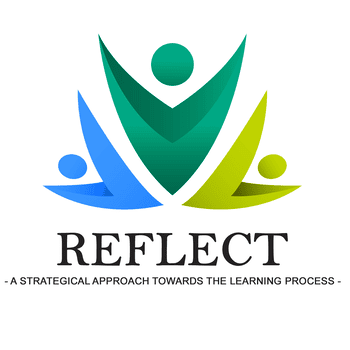Active vs reflective learning is an ongoing debate on what learning style between the two has the best classroom results in recognizing and processing information. There have been many theories on learning styles, but for this article, we will use Felder’s theory from 1993. He came up with five pairs of learning styles with fundamental differences. These learning styles are the “active–reflective,” “sensing-intuitive,” “visual-verbal,” “inductive-deductive, and “sequential-global” pairs.
This article will cover the differences between active and reflective learning, and highlight the importance of reflective learning in education, as it can also be seen through the scope of Reflect European project.
Active vs reflective learning: the differences

Active and reflective learning types prefer to process information differently. While the first wants to use this information, discuss, or see in action how it works, the latter learning type is more of an internal and conscious process.
Active learners
Active learners seek out information and prefer to engage with it through physical activities and discussions. They are very much interested in the learning process in which they actively participate. Active learners learn best when they talk about the acquired information, experiment with it, or put it to the test.
Reflective learners
Reflective learners, on the hand, make learning more of a personal matter rather than something to engage with others. They are the ones who, as soon as they have learned something new, want to think and rethink this information. Reflective learners ask questions and think critically about their own previously established ideas. At the same time, reflecting critically is an excellent way to boost critical thinking.
Active vs reflective learning: the outcome
Researchers have tried to find out the superior learning style between these two. In this research, researchers grouped 56 medical students into three different groups based on their learning styles. The first group was the group of active learners, the second of reflective learners, and the last one was a control group with no specific inclination toward any of these two. Next, researchers tried to find the differences in these groups’ academic achievements (participation, problem-solving skills, quizz scores, and teamwork).
The findings were conclusive in the best learning style between active vs. reflective learning. Students from the reflective learning group scored the highest among the rest. Specifically, active learners had the best outcome in the participation, problem-solving, and quiz scores, except for teamwork, in which the control group scored the highest.
These findings were not what the researchers expected. They thought that active learners would at least score the highest in the problem-based learning sessions that demand more active participation. Moreover, reflective learners also had the highest participation scores, even though they do not prefer group discussions as much as active learners do.
REFLECT – A strategic approach to the Learning Process

Having the above research findings handy, we can understand the importance of facilitating reflective learning in the classroom to increase academic achievement. The REFLECT EU project sees reflective learning as an opportunity to improve performances in formal and non-formal educational activities.
For this reason, the consortium of REFLECT wants to raise awareness at the EU level on reflective learning by targeting youth workers across Europe. Additionally, it seeks to design and validate training tools that focus on reflective learning and have a wide range of applicability.

